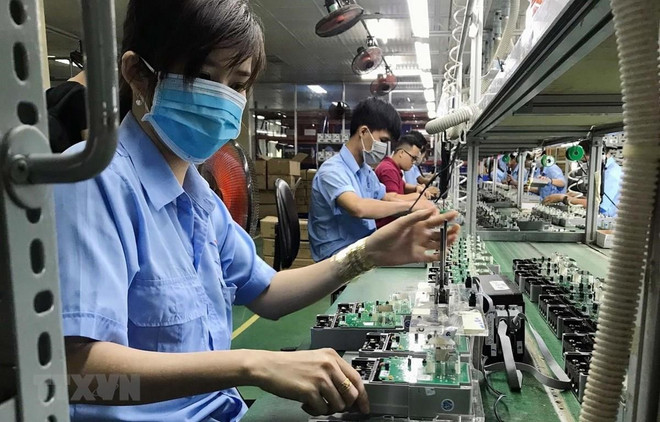The countrycounted 125,800 new firms in the first ten months of this year with combinedinvestments of over 1.37 quadrillion VND and 835,000 labourers, according tothe General Statistics Office (GSO).
The figuresrepresented increases of 34% in the number of firms, 6% in capital and 18% inworkforce compared with the same period last year, the GSO said, adding thatthe average capital of new enterprises in the period was 11 billion VND.
Meanwhile,42,600 operating enterprises registered an increase of above 2.79 quadrillionVND. Therefore, the total registered capital of the economy in the first tenmonths topped more than 4.16 quadrillion VND, up 31% year-on-year.
The GSOreported that the number of enterprises returning to business was 52,700 duringthe period, a yearly hike of 49%.
On theopposite side, 66,400 enterprises temporarily ceased operations, up 37% againstthe last year's same period. Another 40,300 were in the dissolution process, ayear-on-year rise of 13.4% and 12,200 completed dissolution procedures.
On average,12,200 businesses withdraw from the market every month.
From Januaryto October, 1,684 newly-established enterprises operate in the agriculture,forestry and fishery sectors, up 5.1% over the same period last year; over 31,000in the industrial and construction industries, up 23.3%; and 93,100 in theservice sector, up 39%.
To supportbusinesses, GSO General Director Nguyen Thi Huong suggested ministries andbranches to ensure the adequate supply of raw materials and energy to meetenterprises' requirements of production and business recovery andsocio-economic development; remove difficulties and obstacles for importantindustrial projects; and support factories to maintain and restore productionto keep orders.
Along withthat, in the context of deep global integration, she suggested that rising useof trade remedies and supporting Vietnamese exporters be an important role inprotecting and developing export markets, she said.
Manymanufacturing enterprises also suggested that the Government continue tosimplify customs procedures and make them more transparent to reduce costs andenhance predictability for businesses.
Accordingly,it is necessary to quickly build and use systems for the electronic exchange ofdata between enterprises, customs and related agencies./.




























